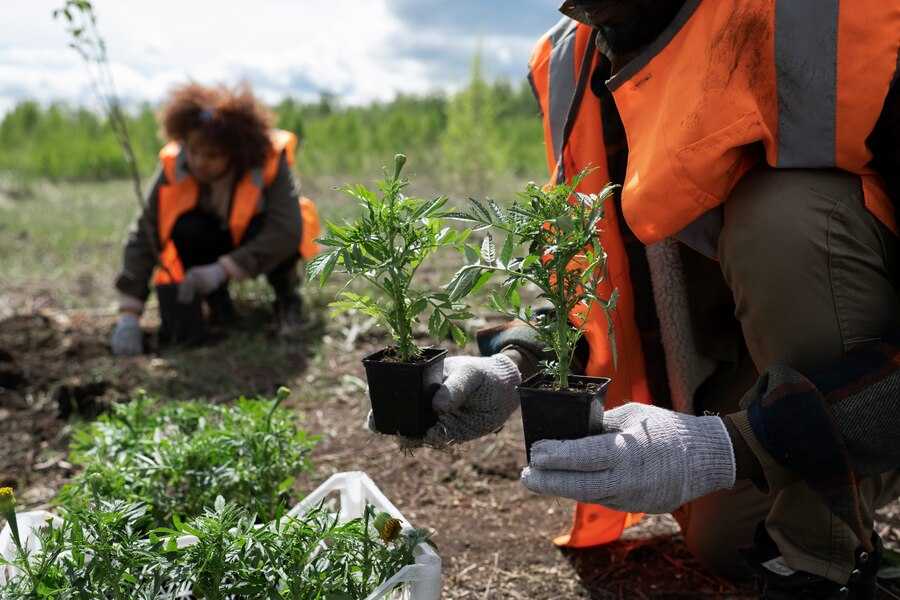on
BY PAUL JUNOR
It has been several years now that the volunteer-driven collective, Justice for Migrant Workers, has been engaged in advocacy and activist work for agricultural workers. It is described as a collective that consists of current and former workers, labour, community activists, and scholars who advocate for: fairness, dignity, and respect for agricultural workers. On Thursday, June 20th, 2024, J4MW penned an important article to address concerns that it has regarding the heat stress that these agricultural workers are facing to mark the first day of summer.
The article states, “J4MW is demanding immediate emergency protections for the tens of thousands of agricultural workers employed in Ontario. Workers have been on the frontline of the ongoing heat wave and are enduring dangerous and deadly conditions while the province ignores their demand for workplace protections.”
J4MW is responding to ongoing calls that it has received with respect to the effect of heat stress. The article elaborates, “Farm workers have been reaching out to our hotline raising concerns regarding the impact of the current heat dome on their well-being. Every year, workers and worker advocates sound the alarm about the dangers of work during heat waves.” J4MW is particularly concerned about the extreme heat conditions that workers in both greenhouse and outside field work endured during the week of June 17th – June 21st, 2024.
J4MW is specifically concerned that although the PC-led government of Doug Ford had promised in 2023 to implement a heat specific regulation to protect Ontario workers, it has failed to follow through.
Justice for Migrant Workers(J4MW) has called on the provincial government to implement the following emergency measures such as:
- Shutting down farms and paying workers in extreme crisis events
- Paying workers when they are not employed as a result of climate-related issues such as: forest fires, extreme heat, major thunderstorms, and heavy rain
- Enacting heat stress proactive inspections
- Implementing clear trigger temperatures for extreme heat and humidity, including indoor temperatures (e.g., greenhouses)
- Preventive measures to avoid overheating including specific requirements for shade acclimatization for new and returning workers, mandatory cool-down rest periods during high temperatures, along with access to preventative cool-down measures as needed
- Extend heat stress protections to be agricultural dwellings
- Implement extreme weather protections to address not only heat, but cold weather temperatures
J4MW is concerned that the provincial government has placed the onus on employers to take a leading role, and not on itself to implement safeguard measures. It states, “The Ford government claims employers have a responsibility to protect workers from heat stress. Yet, workers regularly report long working hours in 30+ degree weather, no access to shade, or adequate breaks, all while doing the backbreaking labour that Canadians don’t want to do.”
Overall, J4MW has expressed concerns about the need for provincial regulations to address its widespread concerns in several areas. The article notes, “It is imperative that this government materially address occupational health and safety hazards such as: heat stress, poor air quality, and chemical and pesticide exposure. Ontario provides no industry-specific regulations for agricultural workers, exacerbating an already crisis-level situation.”
J4MW has made additional demands on Ford such as:
- Strengthening anti-reprisal measures and proactive inspections
- Implementing paid breaks, and providing permanent sick days for agricultural workers
- Providing first aid, hydration stations, and on-site medical support (RN or RPNs)
- Permitting third party complaints at the Ontario Labour Relations Board
- Ending agricultural exclusions under the Employment Standards Act
- Incorporating race and gender analysis in both occupational health, safety, and employment standards
- Ensuring that agricultural harvesters are being paid holiday pay
- Expand the occupational health and safety act to include farm worker accommodations
The article concludes, “Ford has the necessary tools to address long standing issues raised by farm workers. These are not new issues. It’s time to act. Immediate and urgent measures are required to end the structural violence farm workers endure as a result of legal exclusions that exist within Ontario’s legislative framework.”
Furthermore, J4MW reminds the government of previous actions that it expects. It states that there are long standing demands for: permanent status on arrival for migrant workers, an end to unilateral repatriations and disbarment, and equal access to entitlements such as EI and CPP.
Stay in the loop with exclusive news, stories, and insights—delivered straight to your inbox. No fluff, just real content that matters. Sign up today!
With a last name that means “Faithful and loyal,” it is no wonder that Paul Junor has become a welcomed addition to the Toronto Caribbean Newspaper Team. Since 1992, Paul has dedicated his life to become what you call a great teacher. Throughout the years, he has formed strong relationships with his students and continues to show them that he cares about them as people. Paul is a warm, accessible, enthusiastic and caring individual who not only makes himself available for his students, but for his community as well.













